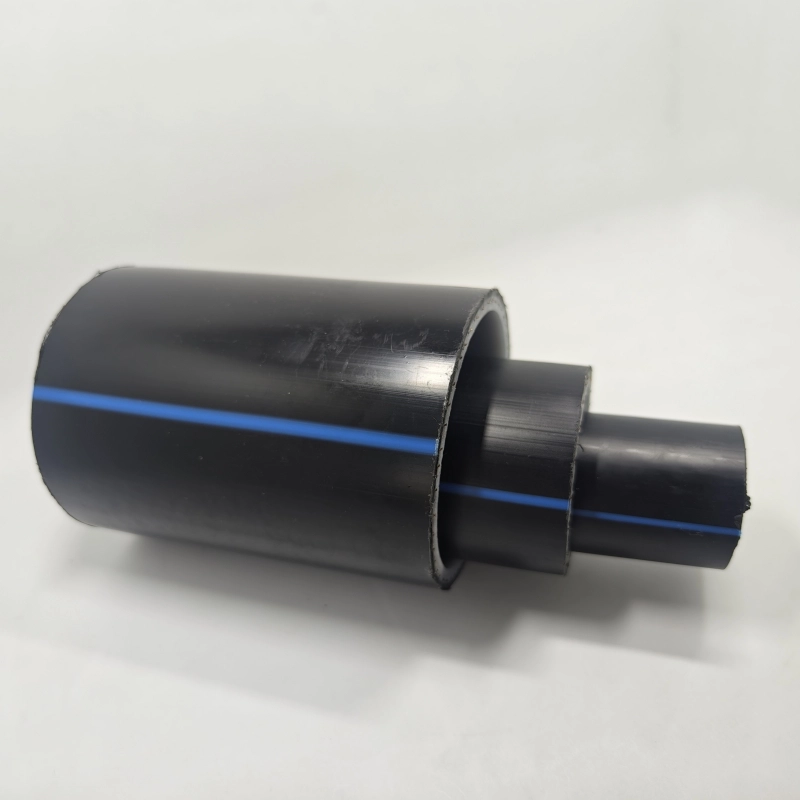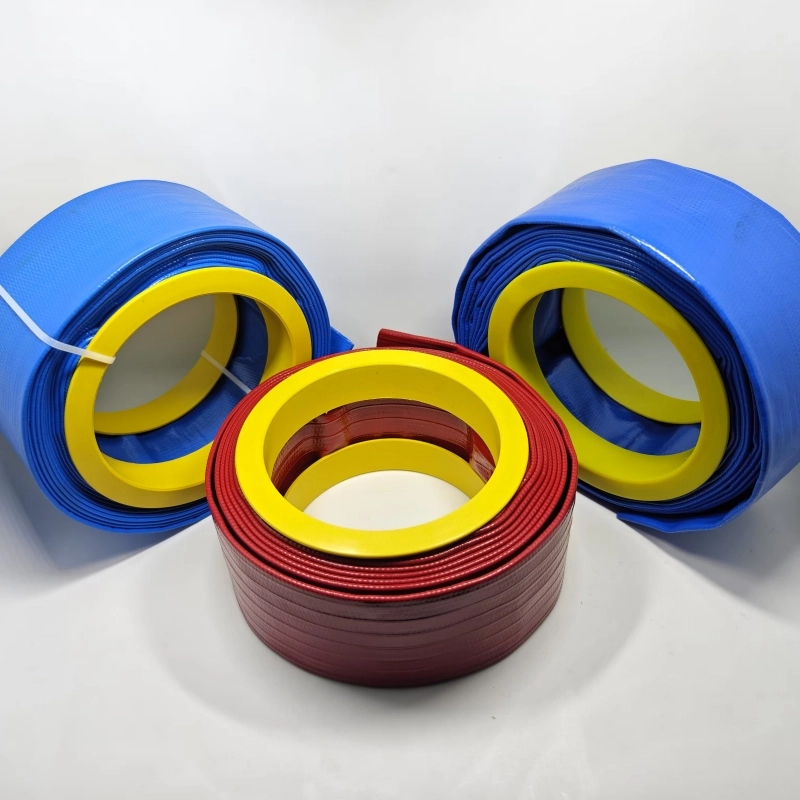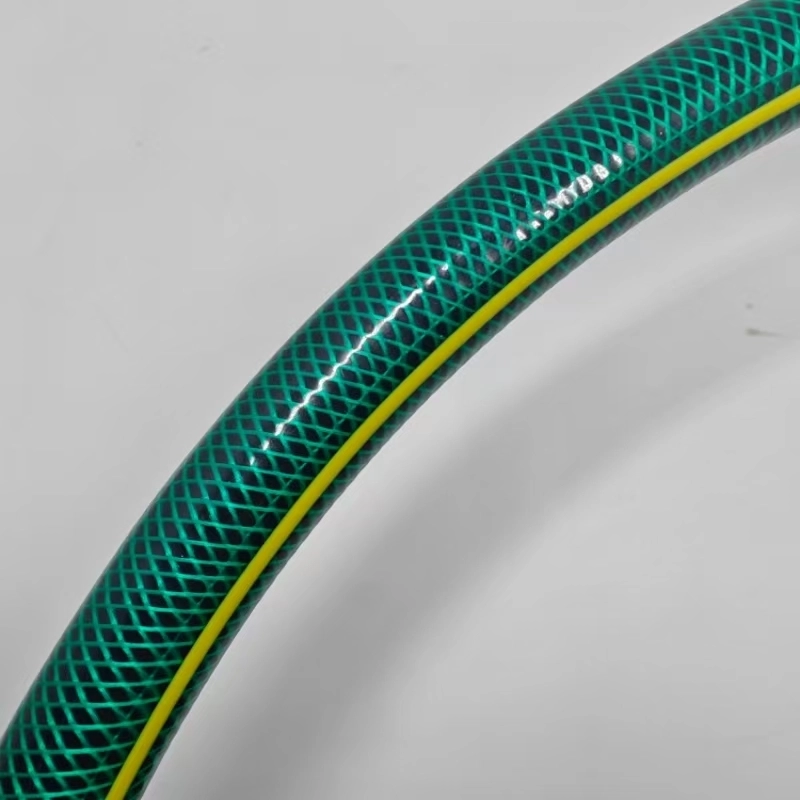PVC vs Rubber Air Hose: A Comprehensive Comparison
When selecting an air hose for pneumatic tools, compressors, or general air supply, the most common choices are PVC and rubber air hoses. Both have their advantages and are suitable for different tasks
When selecting an air hose for pneumatic tools, compressors, or general air supply, the most common choices are PVC and rubber air hoses. Both have their advantages and are suitable for different tasks, depending on the environment and specific needs. In this article, we will compare PVC vs rubber air hoses based on their specifications, pricing, uses, and provide recommendations for first-time buyers.
Specifications Table: PVC vs Rubber Air Hose
| Specification | PVC Air Hose | Rubber Air Hose |
|---|---|---|
| Material | Polyvinyl chloride (PVC) | Synthetic rubber (typically nitrile or EPDM) |
| Diameter Range | 1/4 inch to 1 inch | 1/4 inch to 1 inch |
| Working Pressure | 200 PSI to 300 PSI | 250 PSI to 400 PSI |
| Temperature Range | 0°F to 150°F (-18°C to 65°C) | -20°F to 190°F (-29°C to 88°C) |
| Flexibility | Less flexible, especially in colder conditions | Highly flexible, even in extreme temperatures |
| Weight | Lightweight | Heavier compared to PVC |
| Durability | Moderate durability, prone to cracking in cold | High durability, resistant to wear and tear |
| Kink Resistance | Prone to kinking, especially at lower temperatures | Excellent kink resistance, remains flexible |
| UV Resistance | Moderate | High |
| Oil Resistance | Moderate | High |
| Reinforcement | Braided or spiral polyester fiber reinforcement | Reinforced with polyester or steel wire |
| Usage | Light to medium-duty tasks, indoor use | Heavy-duty industrial, outdoor, and extreme conditions |
Price Standards
| Hose Type | Diameter | Length | Price Range (USD) | Comments |
|---|---|---|---|---|
| PVC Air Hose | 1/4 inch | 25 feet (7.6m) | $10 - $20 | Lightweight and affordable for basic uses |
| PVC Air Hose | 3/8 inch | 50 feet (15.2m) | $20 - $35 | Popular for home and light workshop uses |
| Rubber Air Hose | 1/4 inch | 25 feet (7.6m) | $20 - $30 | Higher cost, more flexible and durable |
| Rubber Air Hose | 3/8 inch | 50 feet (15.2m) | $30 - $45 | Suitable for heavy-duty tasks and industrial use |
| Rubber Air Hose | 1/2 inch | 50 feet (15.2m) | $40 - $60 | High-performance, ideal for high-pressure needs |
Key Differences Between PVC and Rubber Air Hoses
1. Material and Durability
PVC Air Hoses are made from polyvinyl chloride, a synthetic plastic that is lightweight and relatively durable. However, PVC hoses are prone to stiffening in cold weather and can crack over time when exposed to extreme temperatures or UV rays for extended periods.
Rubber Air Hoses are made from synthetic rubber, typically nitrile or EPDM, which offers greater durability and flexibility. Rubber hoses can withstand a wider temperature range and are less prone to cracking or damage under pressure. Rubber hoses are generally more durable than PVC, making them ideal for heavy-duty tasks.
2. Flexibility
PVC hoses tend to be less flexible, especially in colder temperatures, where they can stiffen significantly. This can make maneuvering the hose difficult in outdoor or cold environments.
Rubber hoses are highly flexible even in extreme temperatures, making them easier to handle and coil, whether working indoors or outdoors. This flexibility also makes rubber hoses less prone to kinking, which ensures a smooth flow of air without interruptions.
3. Weight
PVC hoses are lighter in weight, which makes them easy to transport, carry, and store. They are ideal for situations where you need to move the hose frequently, such as in home workshops or garages.
Rubber hoses are heavier, which can make them more cumbersome to carry or move. However, this added weight also makes them more resistant to tangling or blowing around in windy outdoor environments.
4. Kink Resistance
PVC hoses are more prone to kinking, especially when used in lower temperatures. Kinks in a hose can obstruct airflow and reduce the efficiency of the pneumatic tools being used.
Rubber hoses have excellent kink resistance, which means they maintain a steady airflow even when bent or twisted during operation. This is especially important for heavy-duty industrial applications where consistent air pressure is needed.
5. Temperature and Weather Resistance
PVC hoses are less suited for extreme temperature conditions. In cold weather, they can become rigid and hard to work with, while in hot weather, they may soften and become more susceptible to damage.
Rubber hoses perform better in extreme conditions, withstanding high and low temperatures. They also have better UV resistance, which makes them suitable for outdoor use over long periods.
6. Applications
PVC hoses are generally used for light to medium-duty tasks such as powering pneumatic tools in home garages, small workshops, or hobbyist environments.
Rubber hoses are preferred for heavy-duty industrial tasks such as large-scale construction work, automotive shops, and factory applications where durability and flexibility are critical.
Usage Differences
| Usage | PVC Air Hose | Rubber Air Hose |
|---|---|---|
| Home Garage/Workshop | Suitable for light-duty tasks with air tools | Suitable for medium to heavy-duty tasks in all conditions |
| Outdoor Use | Better for mild conditions, may stiffen in cold weather | Excellent for all-weather use, maintains flexibility |
| Industrial | Limited due to pressure resistance and durability | Ideal for industrial tasks requiring high pressure and durability |
| Construction Sites | Not recommended for heavy-duty tasks or extreme temperatures | Perfect for construction, resistant to wear and abrasion |
| Automotive Shops | Suitable for basic tasks like tire inflation | Best for air impact tools, wrenches, and high-demand tools |
Recommendations for Beginners: How to Choose Between PVC and Rubber Air Hoses
Consider the Application:
For light-duty tasks like inflating tires or using air tools in a home garage or hobbyist environment, a PVC air hose is an affordable and lightweight option.
If you're working in industrial settings, construction, or heavy-duty automotive repair, a rubber air hose is the better choice due to its flexibility, durability, and ability to handle higher pressures.
Climate and Environment:
If you're working in extreme weather conditions (either hot or cold), a rubber air hose will provide better performance and resist kinking or cracking. For indoor environments where temperature fluctuations are minimal, a PVC hose will suffice.
Length and Weight:
PVC hoses are lighter and easier to handle, making them suitable for environments where you need to move the hose frequently. However, if you're using long lengths of hose (e.g., 50 feet or more), a rubber hose may be a better choice due to its superior durability, despite the added weight.
Budget:
PVC hoses are more affordable, making them a good option for those on a tight budget or for occasional use. Rubber hoses are more expensive but are built to last, making them a worthwhile investment for professionals or frequent users.
Durability Needs:
If you expect the hose to undergo rough use or abrasive conditions, such as being dragged across rough surfaces or subjected to heavy wear, a rubber air hose will offer better durability and lifespan.
Conclusion
Choosing between a PVC air hose and a rubber air hose depends largely on the specific application, environment, and budget. For light-duty indoor tasks or occasional use, a PVC hose offers a lightweight and affordable option. However, if you're working in demanding industrial environments or require a hose that can withstand extreme temperatures and heavy use, a rubber hose is the superior choice. With the right selection, both types of hoses can serve their purposes well, but understanding the key differences will help ensure you make the best choice for your needs.


